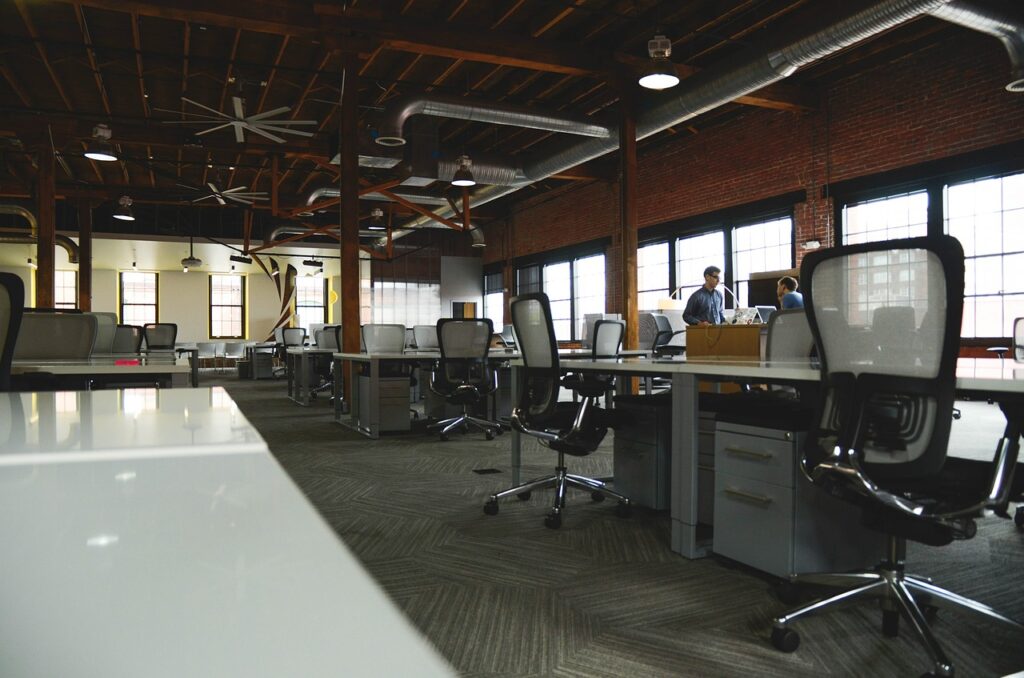
How To Design A Co-Working Space
Spiraling rental costs and dwindling office spaces have made many businesses reconsider how they set up and utilize workspaces. While most companies have traditionally leased entire floors for their operations, more and more firms are looking into more cost-effective and practical solutions.
Enter the coworking space, which provides a feasible solution to the need for more affordable workplace solutions. As the name implies, coworking spaces are designed to accommodate workers from different departments or even different companies in a single space. By utilizing the same infrastructure, the various organizations that utilize the space can benefit from significant cost-savings and increased efficiency.
Many coworking spaces are set up to accommodate employees from different departments within a single firm. These workers are usually assigned to different projects, even though they share the same general space. In some cases, different groups can work together on common projects.
Most coworking spaces aren’t strictly divided into areas devoted to specific teams or tasks. Instead, everyone basically has access to the same workspace and can use each section as needed. Apart from utilizing the same infrastructure, all workers share the equipment and amenities such as computer workstations, printers, and telephones.
Benefits of a Coworking Space
Coworking spaces have many advantages over traditional compartmentalized workspaces, including:
- Shared cost
- Increased efficiency
- Convenience
- Accessibility
- Enhanced communication
- Easier monitoring of personnel and operations
Of course, many of these benefits are attainable with traditional office setups with sufficient planning and restructuring. But they are more easily achievable with coworking spaces, which are set up specifically to enhance workflow, increase efficiency, and reduce costs.
Setting Up a Coworking Space
Here are the common steps involved in setting up a coworking space:
Make sure to have enough power outlets
Nowadays, almost everyone utilizes some type of electronic device for work. Whether laptops, tablets, mobile phones, or desktop computers, they all need electricity to run. Make sure to have enough power outlets to accommodate all the devices used by the different teams and that they are easily accessible.
Provide Wi-Fi and wired internet connections
Internet connectivity is another essential workplace requirement. It is used for research, communications, retail sales, marketing, and numerous other purposes. Apart from a Wi-Fi network that everyone can access, set up a wired system as well. Some people still use desktop computers instead of mobile devices, so wired connections are still useful for modern workplaces.
Set up adequate storage space
Don’t forget to allow enough space for storage. Although coworking spaces are generally less permanent than traditional office spaces, a place to store supplies and equipment is still necessary. Setting up adequate storage space will reduce clutter in the main work areas.
Consider your space requirements
Think about how much space you will need for all personnel. You can generally utilize space more efficiently with a coworking setup, but you still have to accommodate all the workers, furniture, and equipment without crowding. It might be a good idea to plan enough space for all the individual workstations and to allot a large central area for shared use.
Think about your office furniture needs
Coworking spaces free you up from the constraints of traditional office furniture, so take advantage! Instead of sit-down desks and bulky filing cabinets, consider smaller workstations and lighter standing desks that you can easily rearrange as needed. You could also do away with heavy couches in favor of several smaller conference areas.
Install appropriate lighting
Give some thought to how to utilize lighting efficiently in a coworking space. Sufficient centralized lighting is a must, but don’t neglect spot lighting for key areas. In addition to utility and function, consider the aesthetic effect of the light system you will install.
Plan out distinct areas
Finally, remember to plan out distinct areas within your coworking space. It might be best to designate areas for specific tasks and teams with a common area that everyone can use. Consider also the privacy needs of management personnel and other workers. If necessary, you could create small conference rooms or private office spaces for staff that need them.
Traditional office setups will continue to be a common arrangement for many workplaces. Even so, coworking spaces provide many advantages that make them better suited to the needs of many modern organizations. If you want to enhance efficiency and improve workflow while reducing costs, setting up a coworking space might be the solution.